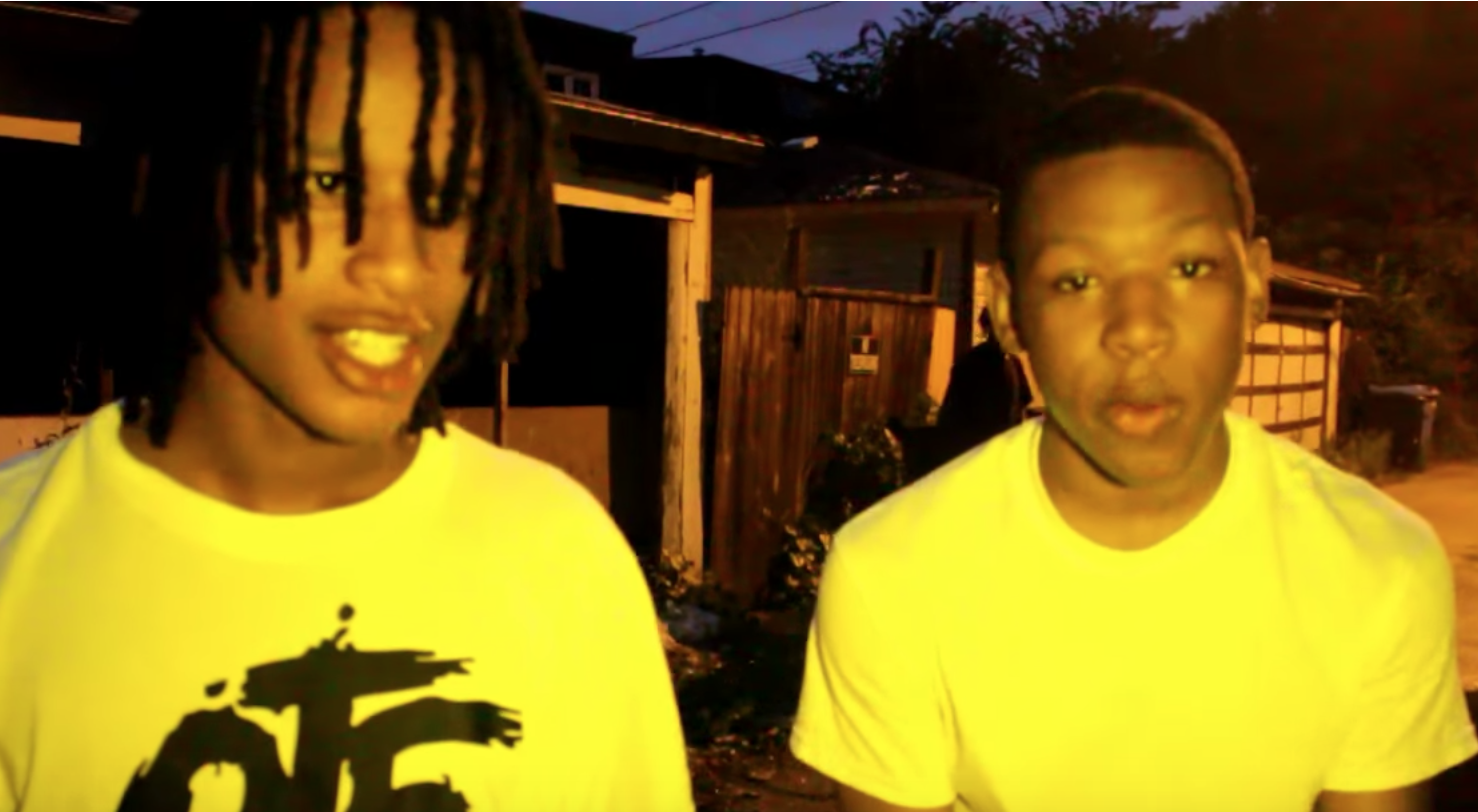
The numbers do not lie.
ZackTV1 is a YouTube channel with over 1,700 videos, about 170,000 subscribers, and its most popular video to date has over 2 million views. It is the brainchild of Zack Stoner, a 29-year-old media entrepreneur who garnered social media buzz by recording Chicago from his unique perspective.
“I wanted to show the world the other side of Chicago. Back when I was growing up, we had Common and Kanye West. Those are great brothers and great entertainers, but I didn’t think they represented Chicago the way that I’ve seen Chicago,” says Stoner. “I wanted to show the world what the other side of Chicago looks like…our culture––the way we dress, what we eat, how we talk, how we walk.”
ZackTV1’s oldest footage is a candid 18-second clip entitled “Summer Camp 09,” a casual vignette of a group of young men rapping and beatboxing. It’s oddly fitting that this is the channel’s first video because it serves as a precursor for Stoner’s content––raw, unfiltered, and centered on young Black men. View ZackTV1’s timeline in chronological order and one can tell that Stoner started taking a more focused approach with his journalism. Candid videos turned into premeditated interviews. The random characters freestyling changed into full-fledged rap music videos. His coverage became more deliberate than accidental.
Stoner’s efforts to unapologetically show the realities of his community does raise a question of ethics and comes with a great deal of pushback from many Chicagoans, as well as traditional journalists.
Stoner documents what others neglect and repeatedly interviews personalities who many had hoped would never grace a camera. His videos are not fluffy, glitzy, and sentimental documentary shorts; on the contrary, they are more like visceral punches to the gut that can leave you either inspired for change or disturbed by reality.
He has given the city’s most controversial artists their first on-camera interviews and covered neighborhoods where news reporters keep their news trucks running. A quick search on ZackTV1’s page will reveal an early teenage Chief Keef, a drill-music pioneer, speaking shyly to Stoner’s camera in a South Side living room. Chief Keef was made into the symbol, and what some would say the scapegoat, of the violence that plagued Chicago from 2012 to 2014. Stoner could never have guessed that Chief Keef would be so famous to the point that he is the target of protests by Father Pfleger, and arguably the most influential rapper of this current era of hip-hop.
Leonard “L’A Capone” Anderson and Clint “RondoNumbaNine” Massey are the featured subjects of Stoner’s top video. Anderson, 17, was tragically killed after leaving a recording studio and Masse (also age 17 at the time of his conviction) is currently doing a 39-year prison bid for a 2014 murder charge.
Stoner says the music he showcases serves as a backdrop to everyday violence that the artists live. “Drill music is a genre. First, it was just a Chicago sound, but now it’s a genre because everyone from different cities is ‘getting on’ with it. We got London drill rappers, New York drill rappers. Chief Keef, King Louie, PACMAN, and Lil’ Durk created a sound that is worldwide. I don’t like when people call it negative. It’s a soundtrack for the Chicago lifestyle.”
Some critics say that Stoner’s channel can potentially exacerbate the violence within the community. ZackTV1 has featured young men from rival sets flashing guns and making threats towards each other. It wouldn’t be farfetched to suggest that the police and people with bad intentions look at his content to record information. Despite these concerns, Stoner stands firm on his ideas and work. Stoner sees ZackTV1 as a mirror of the Chicago he knows and believes that the best way to solve community issues is by showing the community as it is. He doesn’t instruct interviewees on what they can or cannot do on camera. Stoner just presses the record button and asks questions.
“A lot of people respect what I do. I’m the ‘Hood CNN,’” says Stoner. “A news station is one-sided. They’ll get your full interview, but they will cut and edit and put whatever they want out. Whatever you say to me will get put out in full no matter if it’s positive or negative. I show both sides.”
A Good Brother.
“People don’t see what he does behind the scenes, ” says Tony Woods, 37, a business partner and mentor of Stoner. “There have been many occasions where a guy will call Zack on his way ride on his opps (slang for enemies) and Zack would talk him down. The brother has a jail phone. He sends money to incarcerated brothers and takes care of their families. People don’t get to see that side of it. They assume because he’s interviewing the GD’s or BD’s that he’s fanning the flames and that’s not the case.”
Tony Woods, Curtis Toler, and Zach Stoner make up a for-profit collaborative called “Good Brothers.” Actor Curtis Toler says the name is from how they refer to stand-up men in their community.
“The name is self-explanatory. In Chicago, we use a lot of different terms like ‘beloved.’ Cats in LA and New York start to use our lingo. “Good Brother” is a term of endearment and also vouching for a person’s character.”
The Good Brothers is a behind-the-scenes organization that prides itself on doing community service work. Last November, The Good Brothers used the ZackTV1 platform to broker a peace treaty between two gangs in the Altgeld Gardens neighborhood, the AMG (Achieving My Goals) and the Bar-None’s. The organization has mentored youth, facilitated workshops on how youth can monetize their social media accounts, and also partnered with Lilydale Baptist Church for a gun buyback event.
“We’re trying to make peace profitable. People make a lot of money off of violence,” declares Woods. “The legal system. Social service organizations. Non-Profits. The people make a bag off of us, death, and everything that goes wrong in the community. We can use Zack’s platform as a method of promoting peace indirectly.”
Stoner’s commitment to community service not only adds more complexity to his brand of media, but it questions the fundamental practices and future of journalism. ZackTV1 serves as the Bat Signal and The Good Brothers are Batman coming to Gotham’s rescue. Stoner challenges traditional forms of journalism by not abstaining from attempting to address the very issues that he covers. In fewer words, this is accountability and probably a model worth emulating given the relationship with Black communities and exploitative media.
“If you study ZackTV’s interviews, you’ll notice that at the end of them, I often ask ‘What can we do to resolve the violence in Chicago?’ But a lot of young men feel that their hood will look down on them if they wanted to fix the problem. A lot of people may look at these individuals like they’re thugs, ghetto hoodlums, or nobodies. But to me, I look at each artist as a human being that is stuck in this box that they are trying to get out. When you’re in the hood–ghetto, urban communities, whatever you want to call them–it’s a way of life but also survival tactics. Never judge a book by its cover. Never look down on the next man.”
Zach Stoner clearly wants to help Chicago. In his own words, he wishes to “change Chiraq into Chicago” and now over 150,000 people are watching. ZackTv1 can be a call to action for Chicagoans to engage our darkest places and seek the remedies necessary to improve current conditions, or we can just view more reality television.
The Hood CNN: ZackTV1



